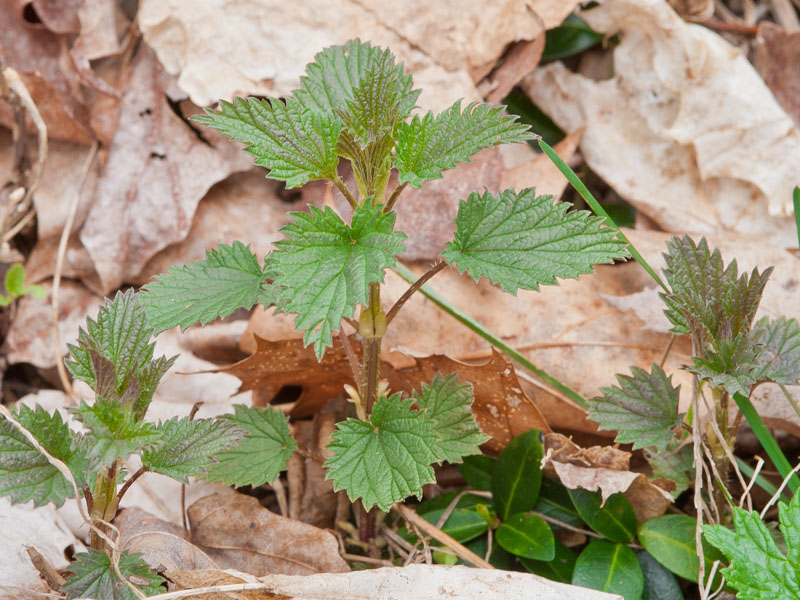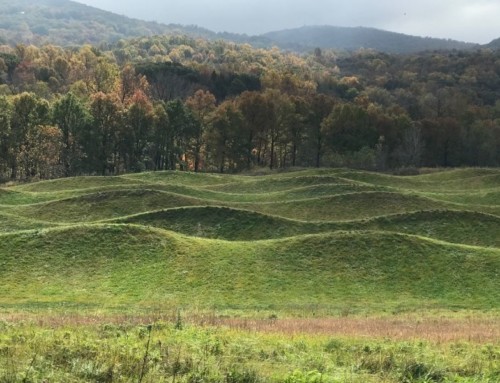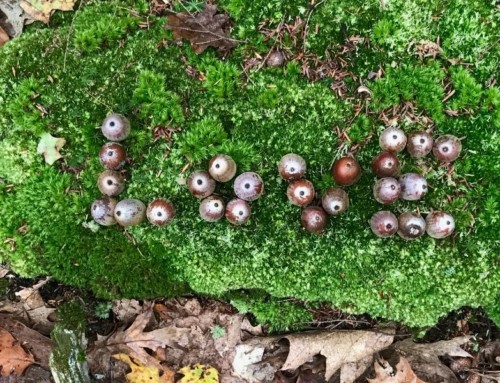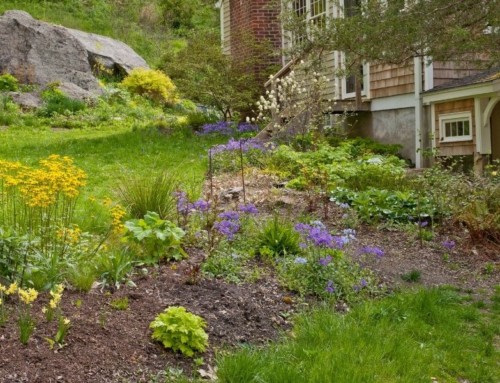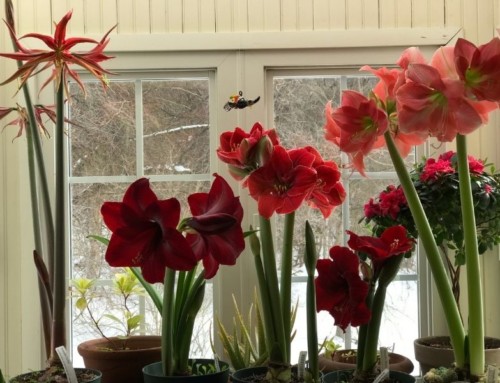I’ve been making a game of seeing how long I can go without going to the grocery store. That means not just living in the garden, but living on what grows in it.
Last year’s frozen bounty – little jars of slow-roasted tomato-garlic spread and arugula-mint-parsley pesto – is long gone. I polished them off on pasta and in soups, savoring every summery bite. Plenty of wild rustic arugula overwintered in my community garden plot, but the parsley didn’t, and it’s a long time ’til tomatoes.
Fresh mint (I grow plain peppermint, Persian, grapefruit and mojito mints) finds its way into cocktails, tea, desserts, salads, hot buttery potatoes, savory dishes – and my lawn. The fragrance of mingled mint and fresh-mown grass is a heavenly sensory experience I cultivate on purpose.
In early May, I kept my eye on ostrich ferns and was here to notice and harvest fiddleheads at just the right stage, before they unfurled. So often I’ve waited and waited for signs of life and then missed them.
Years ago, a friend with ostrich ferns taking over her garden gave me one plant. Now they’re taking over mine. There’s enough to both eat and enjoy their gracefully distinctive architecture. But I really need to dig them out of the path.
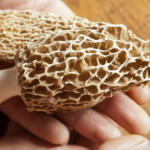
Morel mushrooms
I dunked the fiddleheads in boiling salted water and sautéed them with morels and wild ramp leaves (two more spring treats I often miss because I’m away), harvested from the woods on my back slope.
Forager Russ Cohen taught me to just snip part of one ramp leaf per plant, rather than digging them up, to preserve the colony. Ramps soon go dormant, but will reappear next spring if you don’t overharvest or dig them out.
Wild Greens
I love sautéed mixed greens, even bitter ones. Foraging and plant identification books have been piling up on my dining table for months, so by early May I was confident enough to try eating some new weeds – I sure had enough of them.
Stinging nettles (harvested very carefully and cooked in salted water until tender) were already a favorite. The cooking water is good whether you consume it as broth or pour it on your head – it’s a scalp-tingling dandruff cure.
Nettles (photo above), mouse-eared chickweed (Cerastium vulgatum), dead nettle (Lamium purpureum) and fragrant bedstraw (Galium triflorum), sautéed with perennial leeks (Allium ampeloprasum) weren’t ready to eat when I was.
They were still kind of tough, not all that exciting, and I was hungry. So I refrigerated the whole mess. Scanning the larder for inspiration the next day, I found chicken stock, chicken chorizo and a can of white beans.
Simmered together with a pinch of this and a pinch of that – thyme, bay leaf, basil, black pepper, my homemade herb salt, the last two frozen tomatoes and a slosh of wine, they made the most delicious “escarole” bean soup.
Wild greens don’t have to be smothered in bacon fat to taste good!
Rhubarb
Most people think of rhubarb, now in its prime, as dessert. But I’ve really liked my savory supper experiments.
A sauce of rhubarb and caramelized Vidalia onions cooked with fresh rosemary, orange marmalade and rosé wine perks up meat dishes. Or you can cook it down til it’s thick and spread it on chevre-smeared sliced baguettes. Yum.
Not that I have anything against rhubarb desserts.
When I was a kid, my mother’s pineapple rhubarb pie was the biggest treat. I skip the crust and cook chunks of rhubarb with a can of pineapple, gradually adding just enough honey, maple syrup or jam to hardly pucker up at all when I taste it.
Now that I’ve cooked up a fresh batch, maybe it’s time for a grocery run after all. I’ll bet ginger ice cream on top would be beyond delicious.
